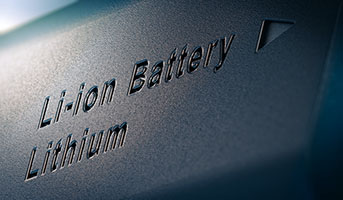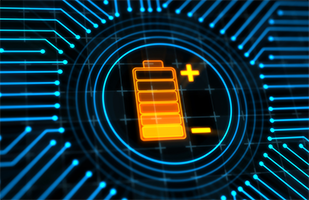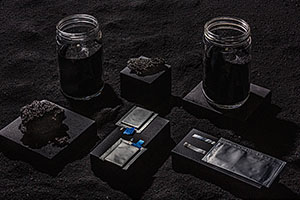From Sandia National Laboratory Solid-state batteries, currently used in small electronic devices like smart watches, have the potential to be safer and more powerful than lithium-ion batteries for things such as electric cars and storing energy from solar panels for later use. However, several technical challenges remain before solid-state batteries can become widespread. A Sandia…
Carmakers reorganizing for EVs, in this week’s R&D power index
Hydrogen and coal are powering the future, in this week’s R&D power index
National Energy Storage Summit to jumpstart America’s energy storage future
On March 8 and 9, Lawrence Berkeley National Laboratory (Berkeley Lab) is hosting the National Energy Storage Summit, a virtual public event that will connect thought leaders across industry, government, communities, and the research enterprise to catalyze partnerships and accelerate solutions around specific challenges to America’s energy storage future. Exponential energy storage deployment is both…
GIST scientists propose a non-invasive approach to estimating li-ion battery degradation
The emergence of electric vehicles has created a spike in the usage of lithium-ion batteries. Consequently, there is a need for diagnosing battery health reliably to prevent accidents from unexpected operational issues. To this end, scientists from the Gwangju Institute of Science and Technology in South Korea have now developed a rapid non-destructive analysis technique…
Intel wants to regain “chipzilla” status, in this week’s R&D Power Index
The R&D World Index (RDWI) for the week ending February 4, 2022, closed at 5,420.09 for the 25 companies in the RDWI. The Index was up 2.64% (or 139.41 basis points) from the week ending January 28, 2022. The stock of 13 RDWI members gained value from 0.12% (Bristol-Myers Squibb) to 7.46% (Alphabet/Google). The stock…
Greater than expected growth in fourth quarter, in this week’s R&D power index
The R&D World Index (RDWI) for the week ending January 28, 2022, closed at 5,280.68 for the 25 companies in the RDWI. The Index was up 1.39% (or 72.41 basis points) from the week ending January 21, 2022. The stock of 12 RDWI members gained value from 0.34% (AstraZeneca) to 4.88% (Apple Computer). The stock…
Rising inflation rates undermine economic growth, in this week’s R&D Power Index
The R&D World Index (RDWI) for the week ending January 21, 2022, closed at 5,208.27 for the 25 companies in the RDWI. The Index was down -5.66% (or 312.43 basis points) from the week ending January 14, 2022. The stock of only one RDWI member gained value at 0.42% (AstraZeneca). The stock of 24 RDWI…
Rubber material holds key to long-lasting, safer EV batteries
by Georgia Institute of Technology For electric vehicles (EVs) to become mainstream, they need cost-effective, safer, longer-lasting batteries that won’t explode during use or harm the environment. Researchers at the Georgia Institute of Technology may have found a promising alternative to conventional lithium-ion batteries made from a common material: rubber. Elastomers, or synthetic rubbers, are…
Sony and Foxconn developing EVs, in this week’s R&D Power Index
The R&D World Index (RDWI) for the week ending January 7, 2022, closed at 5,472.25 for the 25 companies in the RDWI. The Index was down -2.79% (or -157.25 basis points) from the week ending December 31, 2021. The stock of 16 RDWI members gained value from 0.17% (Roche Holdings AG) to 17.67% (Ford Motor).…
EVs becoming more collaborative, in this week’s R&D power Index
The R&D World Index (RDWI) for the week ending December 31, 2021, closed at 5,629.50 for the 25 companies in the RDWI. The Index was down -0.39% (or -22.32 basis points) from the week ending December 24, 2021. The stock of 21 RDWI members gained value from 0.11% (Alibaba) to 3.02% (General Motors). The stock…
Top-10 areas of amazing science at Brookhaven Lab in 2021
By Karen McNulty Walsh and Stephanie Kossman, Brookhaven National Laboratory Research at the U.S. Department of Energy’s (DOE) Brookhaven National Laboratory spans scales from the cosmic to subatomic, advancing our understanding of the world around and within us. Looking for discoveries that spark transformational technologies? Brookhaven has those, too! Here’s the 2021 recap of important…
R&D 100 winner of the day: IS-P4 Separator-free Lithium-ion Battery
NAMI and ATL have developed a separator-free lithium-ion battery (LIB) technology with a breakthrough nanofiber conformal coating on the electrode. The separator affects cell performance and safety. Reports show that the separator layer accounts for 7-10% of the price of the cell and the global demand for separators is expected to be over $1.3 million…
Positive results for Pfizer’s COVID-19 pill, this week in the R&D Power Index
The R&D World Index (RDWI) for the week ending December 17, 2021, closed at 5,518.10 for the 25 companies in the RDWI. The Index was down -2.09% (or -117.84 basis points) from the week ending December 10, 2021. The stock of 14 RDWI members gained value from 0.06% (Intel) to 12.69% (Pfizer). The stock of…
LiTAS lithium extraction pilot plant deployed to world’s largest lithium resource
EnergyX has successfully deployed the first of three LiTAS pilot plants, a containerized direct lithium extraction (DLE) unit, for operation at Bolivia’s Salar de Uyuni, the largest lithium resource in the world. EnergyX first licensed its core technology from the University of Texas in May 2019, and only two years later has amassed a team…
Samsung reorganizes and EPA relents on regs, this week in the R&D Power Index
The R&D World Index (RDWI) for the week ending December 10, 2021, closed at 5,635.94 for the 25 companies in the RDWI. The Index was up 4.19% (or 226.57 basis points) from the week ending December 3, 2021. The stock of 19 RDWI members gained value from 0.07% (Bristol-Myers Squibb) to 16.31% (Oracle). The stock…
New testing method yields pathway to better, longer-lasting batteries
From Sandia National Laboratories Using a microscopic method for measuring electrical potential, a team of scientists at Sandia National Laboratories may have discovered how to make a longer-lasting, more efficient battery. The team of Elliot Fuller, Josh Sugar and Alec Talin detailed their findings in an article published Oct. 19 in American Chemical Society Energy…
VW’s Elli launches ‘Volkswagen Naturstrom Connect’ with electric mobility pioneers ev.energy.
Elli, the Volkswagen subsidiary that provides sustainable energy and charging solutions, has partnered with ev.energy to launch the Volkswagen Group’s first ever intelligent household electricity tariff: Volkswagen Naturstrom Connect. The tariff will use ev.energy’s platform to market and manage the new tariff with electric vehicle owners. The Volkswagen Naturstrom Connect tariff has been developed by…
Rockwell Automation and battery pioneer Cadenza Innovation to explore driving energy storage and advance sustainability
Rockwell Automation, the world’s largest company dedicated to industrial automation and digital transformation, has announced it has begun collaborating with Cadenza Innovation, provider of safe, low cost and energy-dense Lithium-ion-based storage solutions, to define a strategic relationship including a shared goal of building the industry’s highest performance battery cell production lines. During 2022 the companies…
R&D 100 winner of the day: Layered-Rocksalt Intergrowth Electrode Materials for Next-Generation Li-ion Batteries
The $30 billion-plus global Li-ion battery market is expected to double in the next five years. Improved cathode materials will enable Li-ion batteries to operate reliably at high capacity and high voltage over repeated cycles without sacrificing performance, safety or cost. However, existing options are hindered by material and performance degradation at high voltage, limiting…
eLNO cathode technology to debut at COP26 in the world’s first two-seater electric race car
The first full size lithium-ion battery cells featuring Johnson Matthey’s advanced eLNO cathode technology are being installed in a unique high performance race car. eLNO is a family of nickel-rich cathode materials that safely enables batteries to perform better and charge more quickly while retaining exceptional battery lifetime. The global leader in sustainable technologies partnered…
DOE announces $209M for electric vehicles battery research
The U.S. Department of Energy (DOE) has announced $209 million in funding for 26 new laboratory projects focusing on electric vehicles, advanced batteries and connected vehicles. Advanced, lithium-based batteries play an integral role in 21st century technologies such as electric vehicles, stationary grid storage and defense applications that will be critical to securing America’s clean…
Breakthrough research makes battery recycling more economical
From Argonne National Laboratory How do we make battery recycling cost effective? Scientists at the ReCell Center have taken another step towards that goal. Lithium-ion batteries are the engines of our technological present and future. They power portable electronics, such as smartphones and laptops and electric vehicles (EVs), which are growing in popularity. But the…
The 2021 New Product Showcase at E/HV trade show to feature innovators
The Battery Show and Electric & Hybrid Vehicle Technology Expo North America, the largest and most comprehensive advanced battery technology and E/HV trade show and conference, has announced the 24 companies set to partake in this year’s New Product Showcase. Slated for September 14-16 at the Suburban Collection Showplace in Novi, Michigan, the event returns…
Group14 Technologies and InoBat partner to deliver lithium-silicon batteries to automakers
Group14 Technologies, a global provider of silicon-carbon composite materials for lithium-ion markets, and Inobat Auto, a European battery R&D and manufacturing company, announce a partnership to custom manufacture high energy density batteries for automotive applications. As major global automakers continue to make commitments to all-electric lineups, the demand for higher-performing energy storage is continuing to…

















